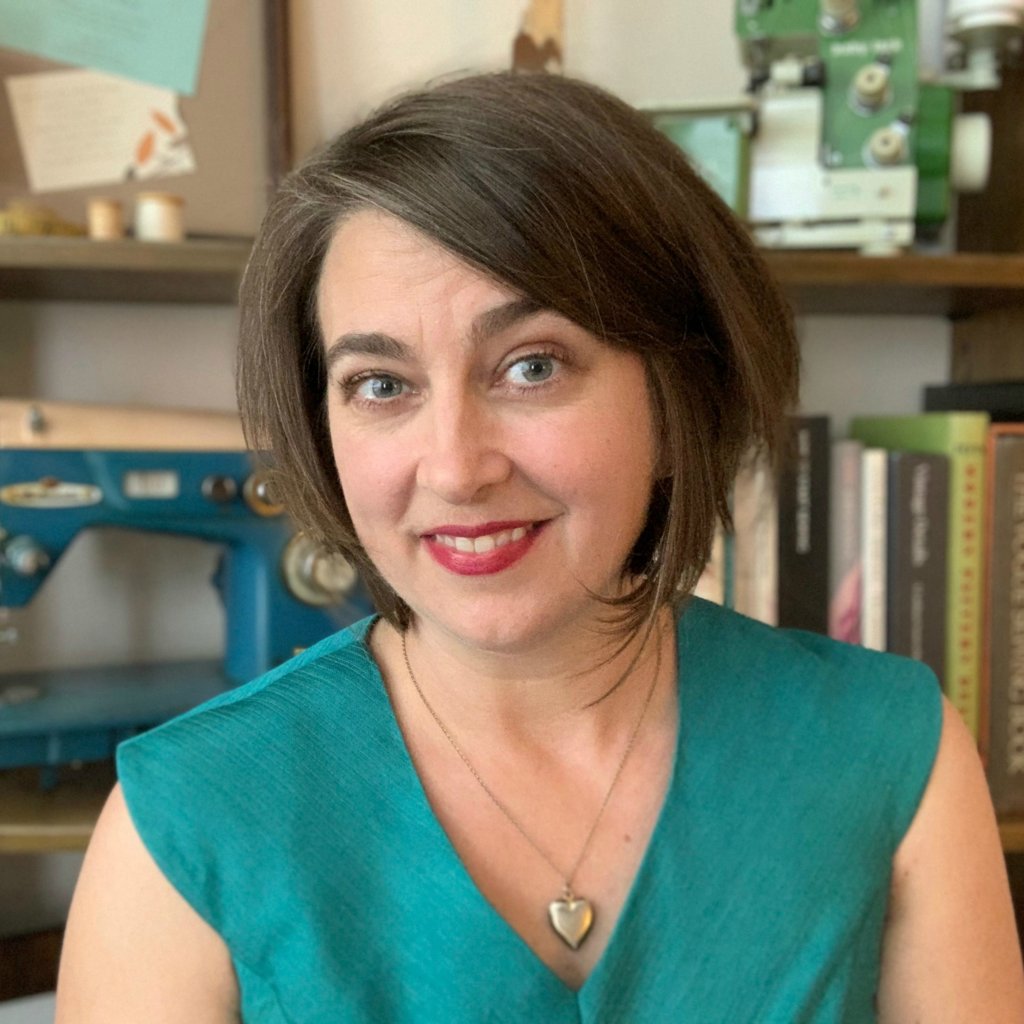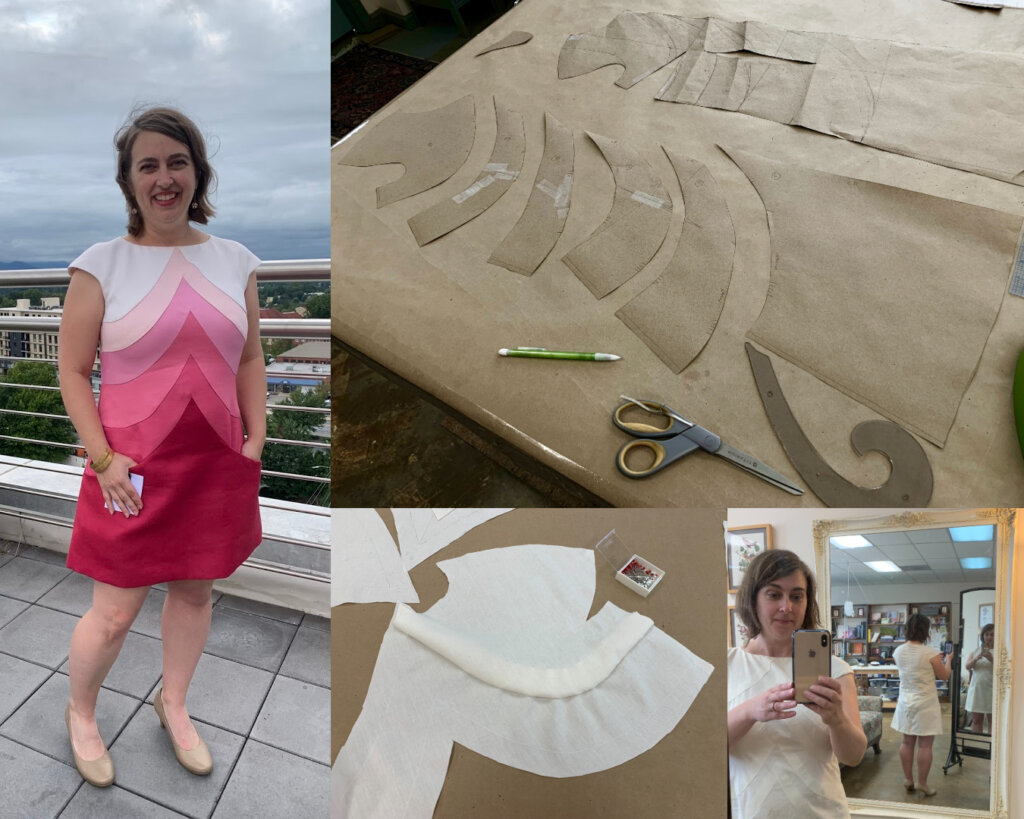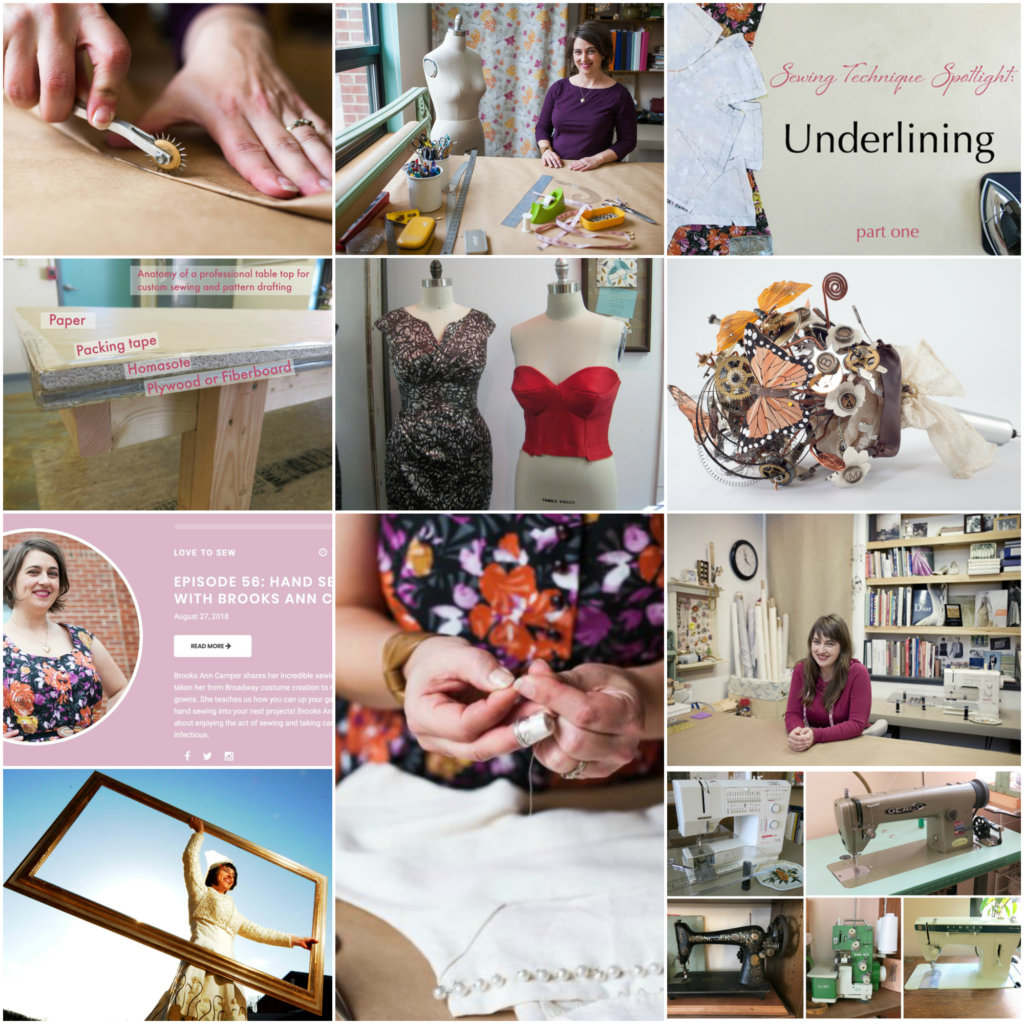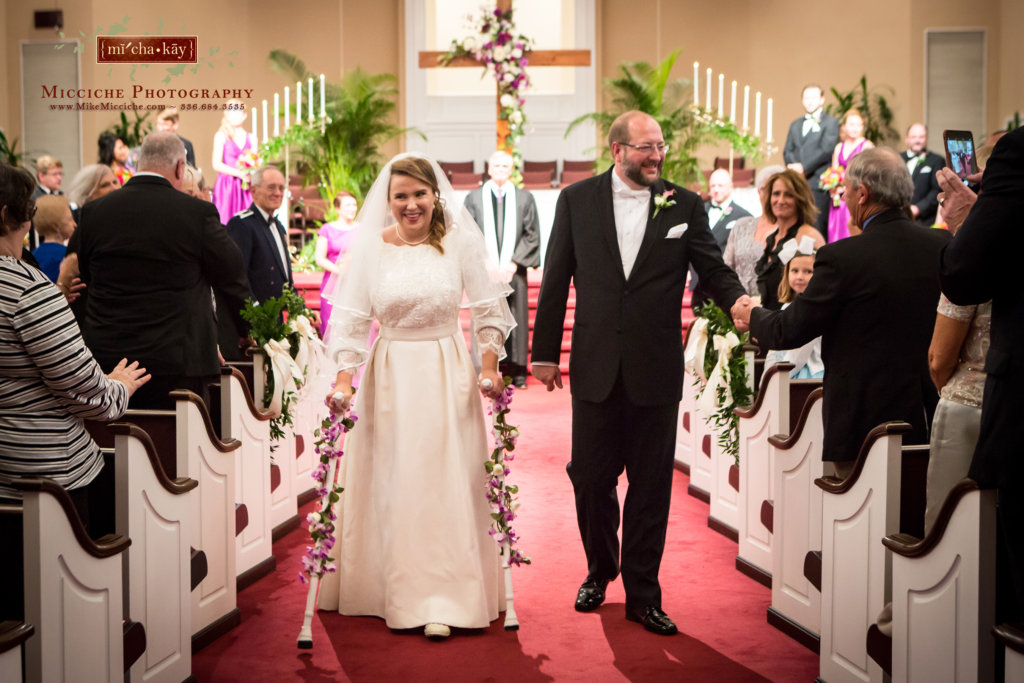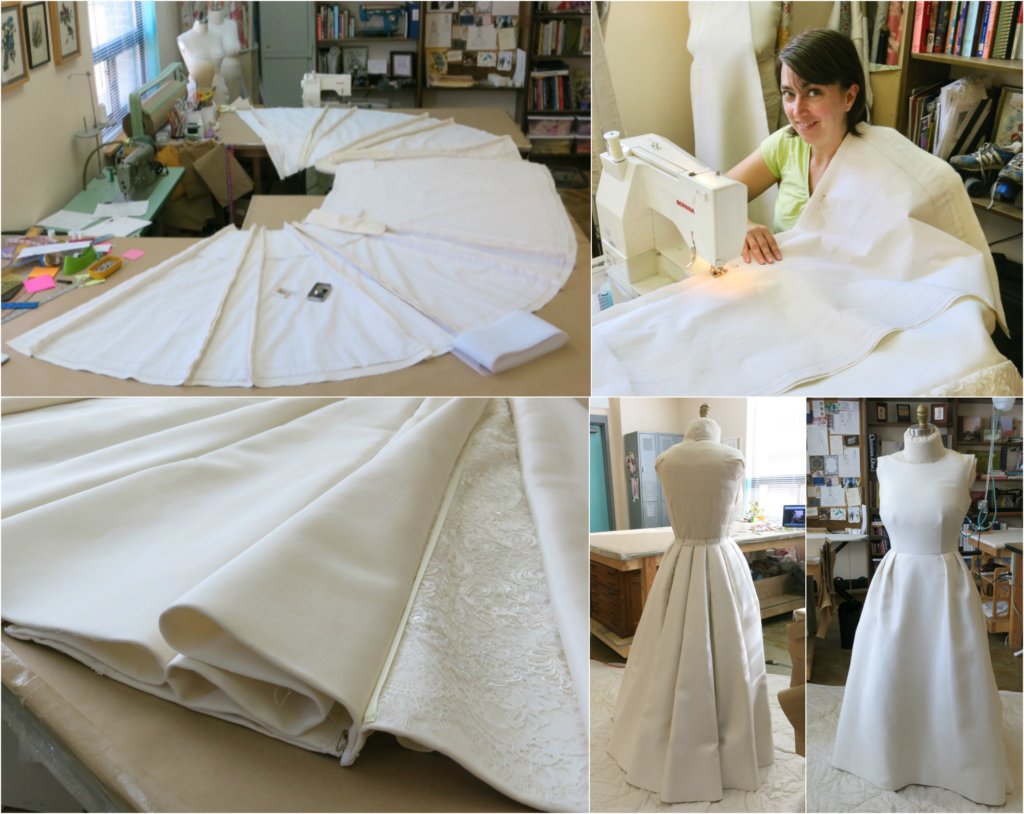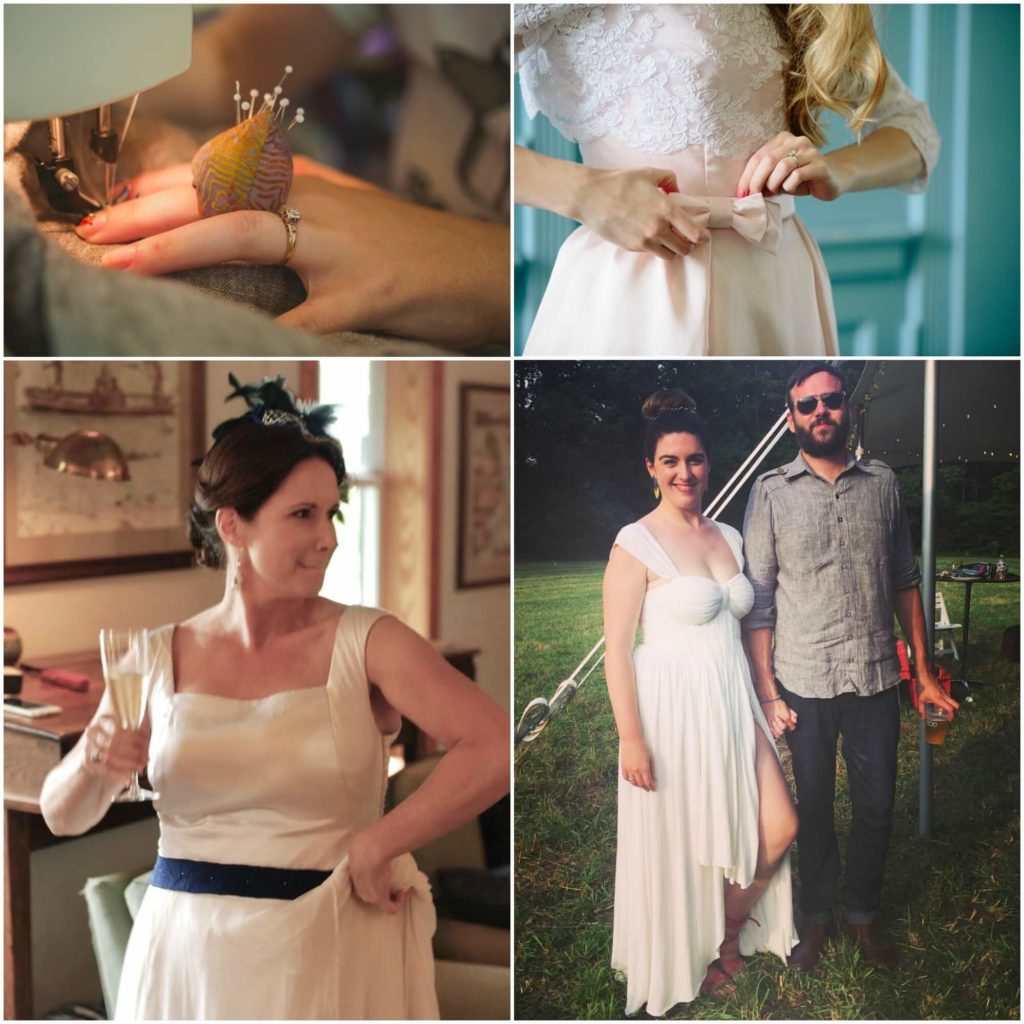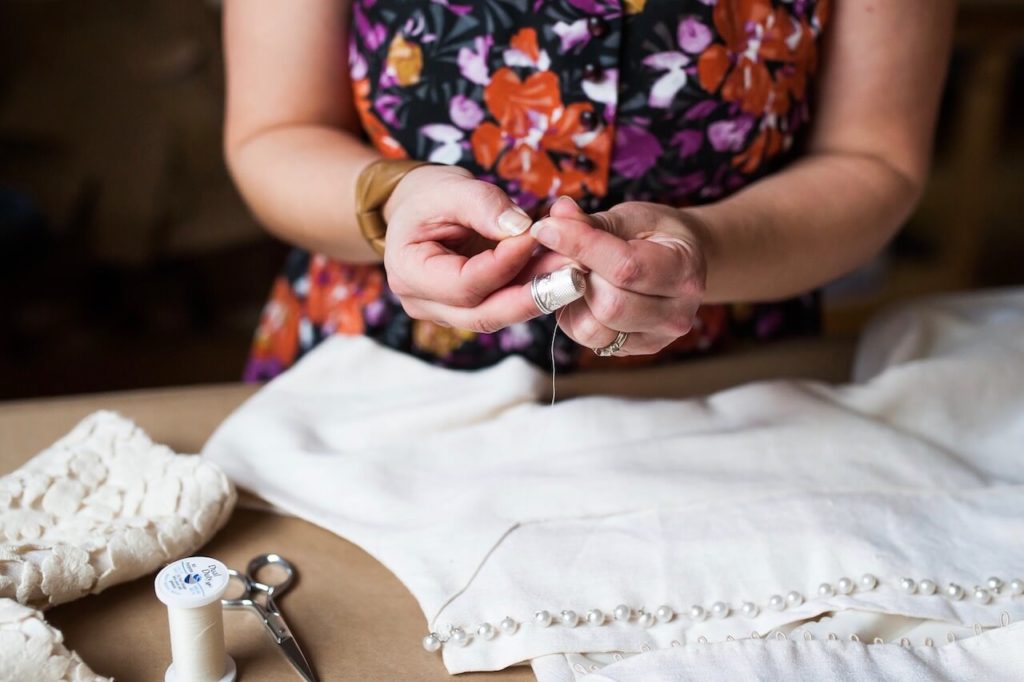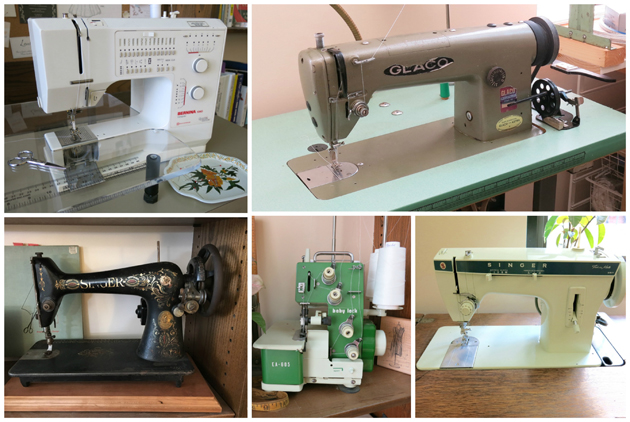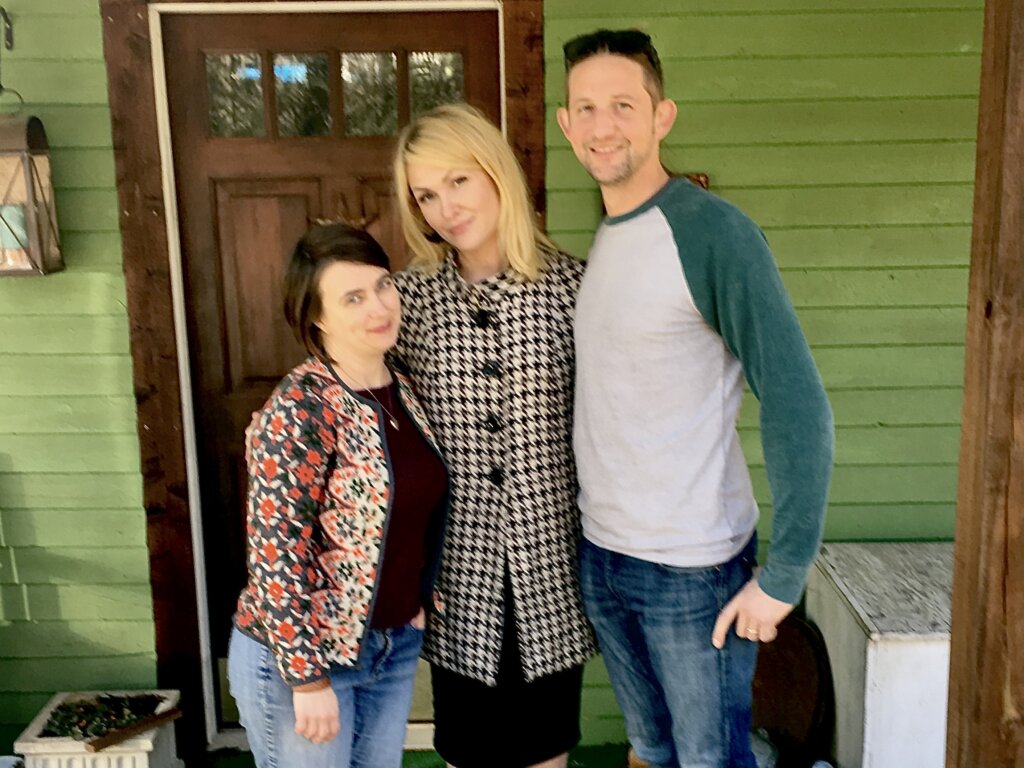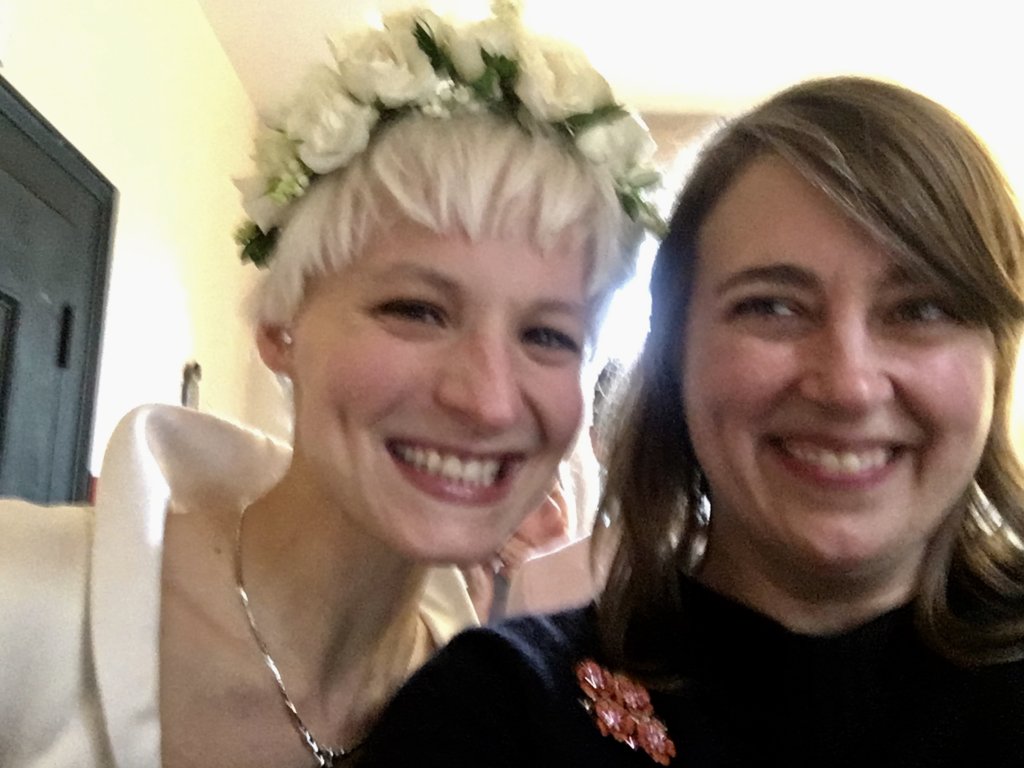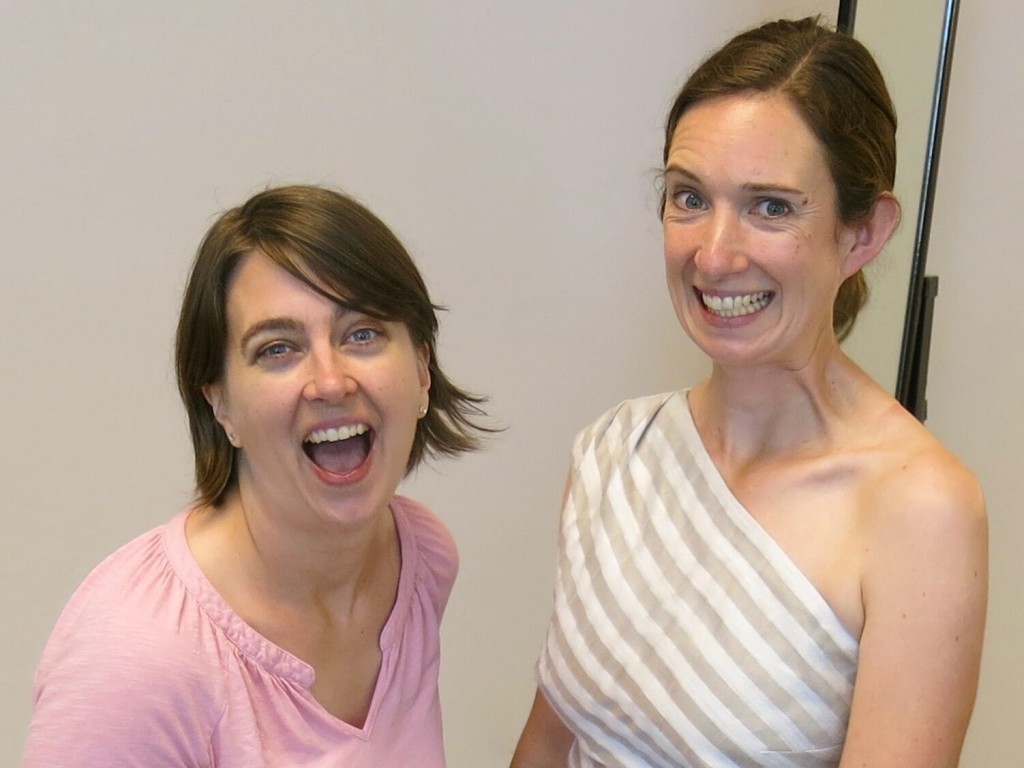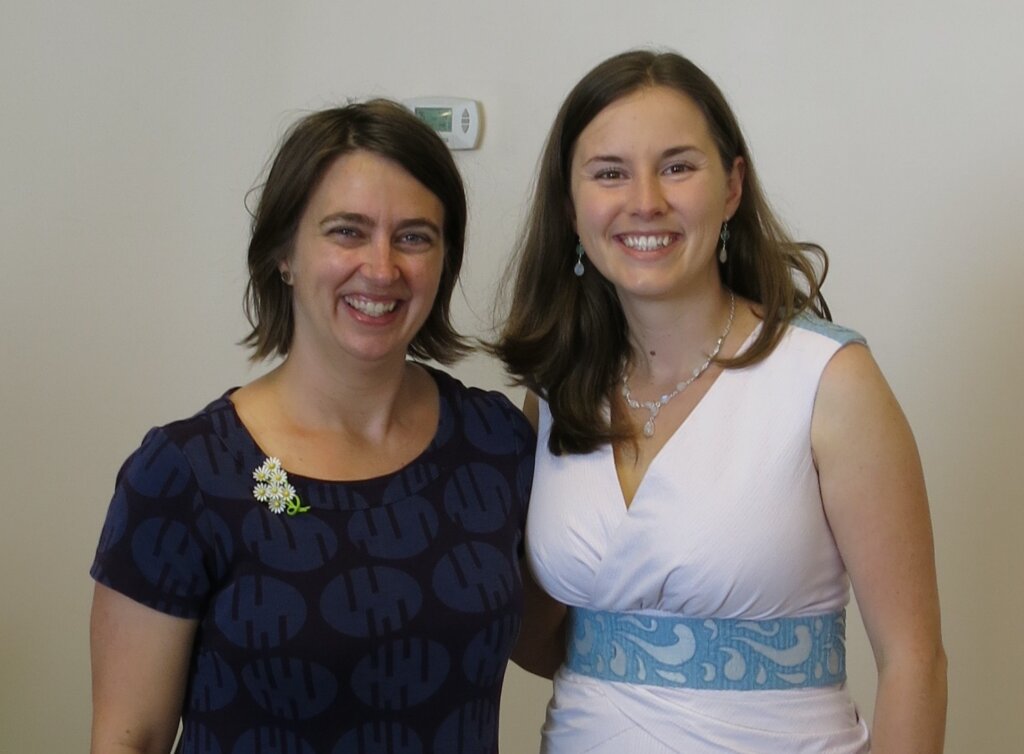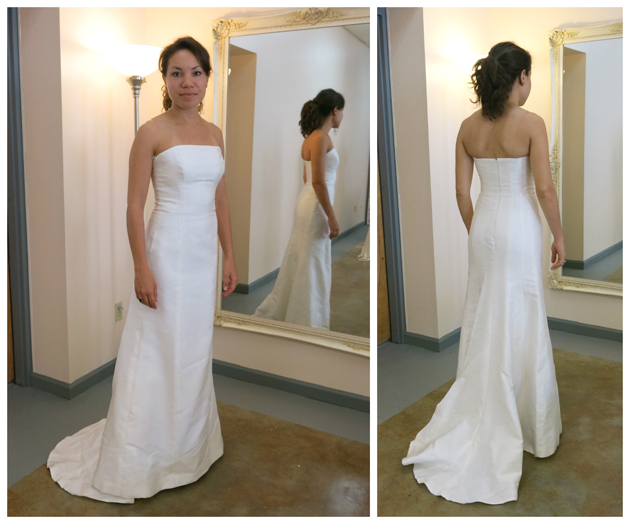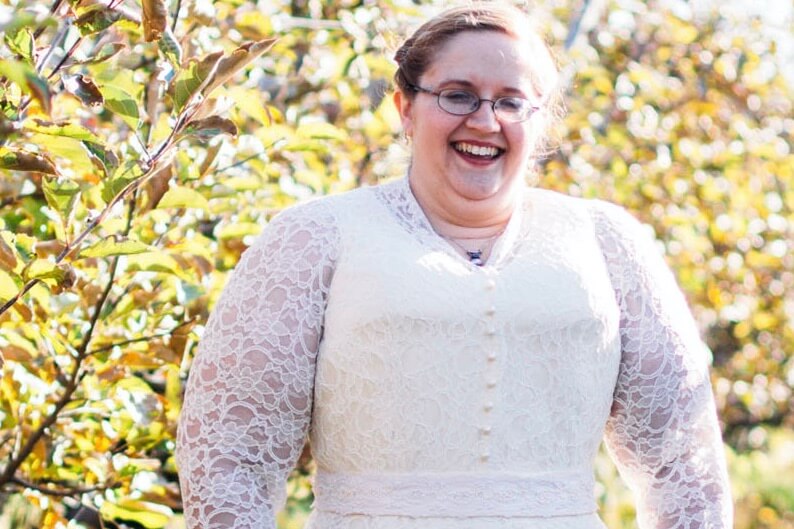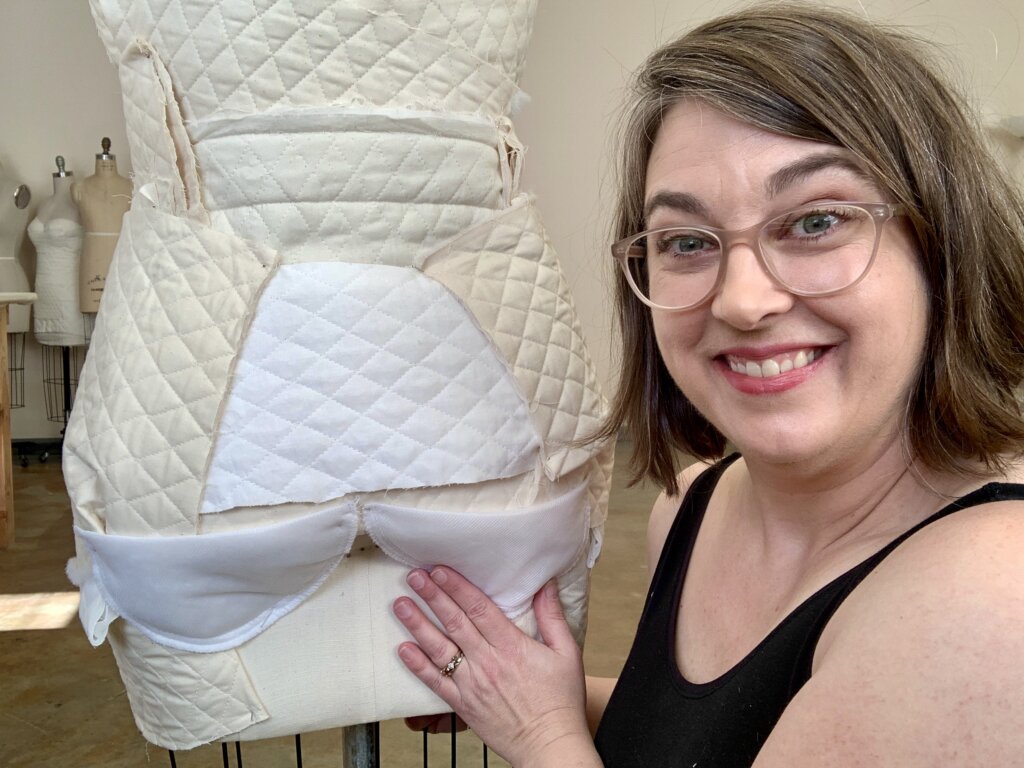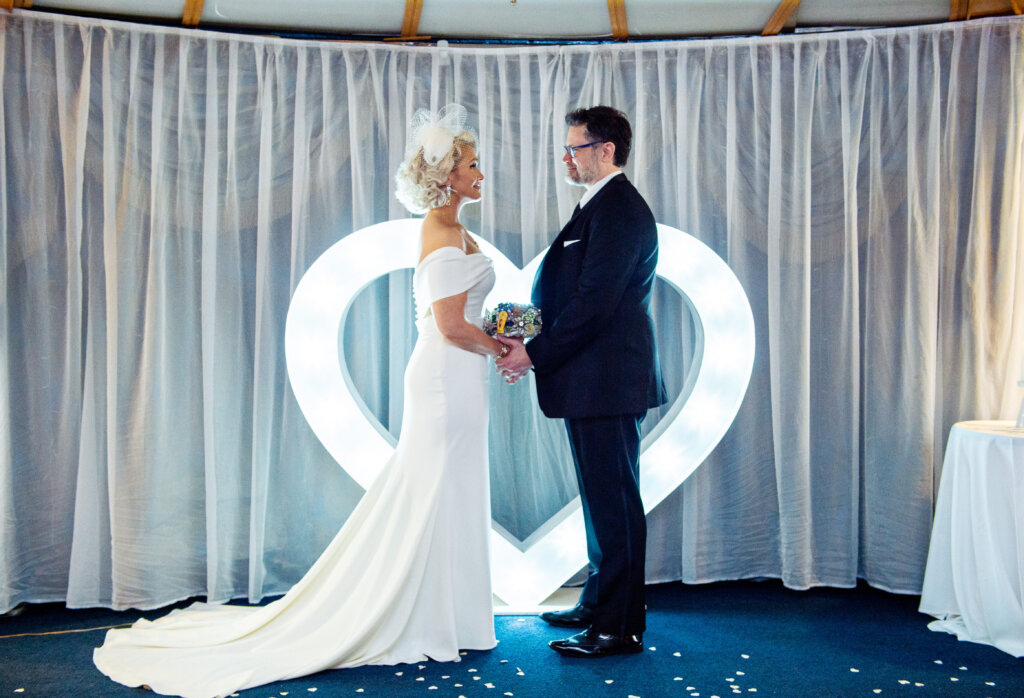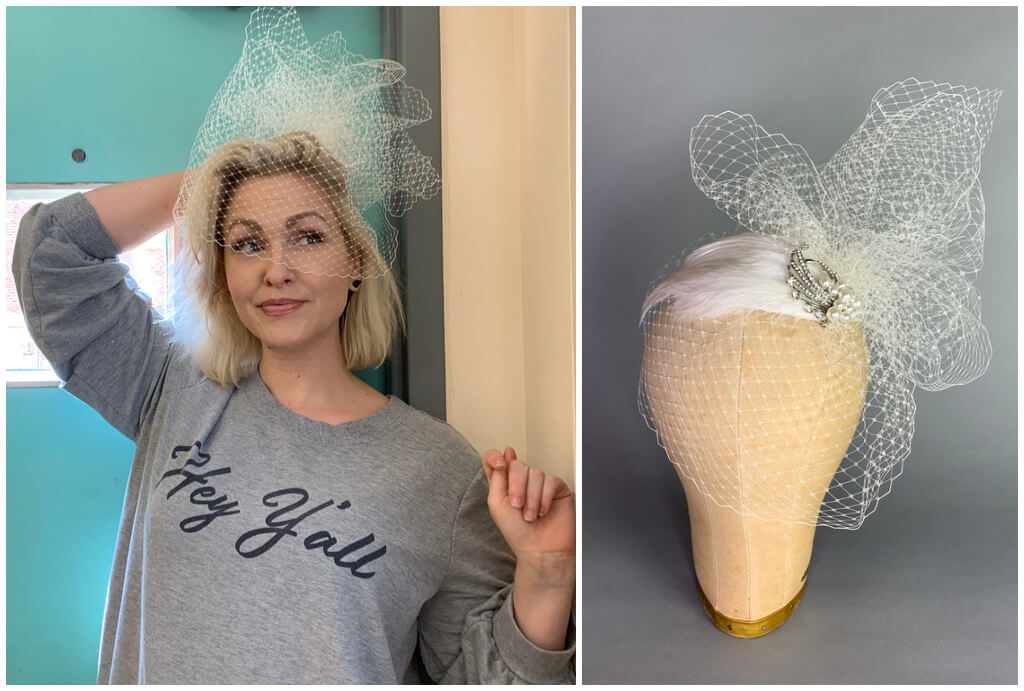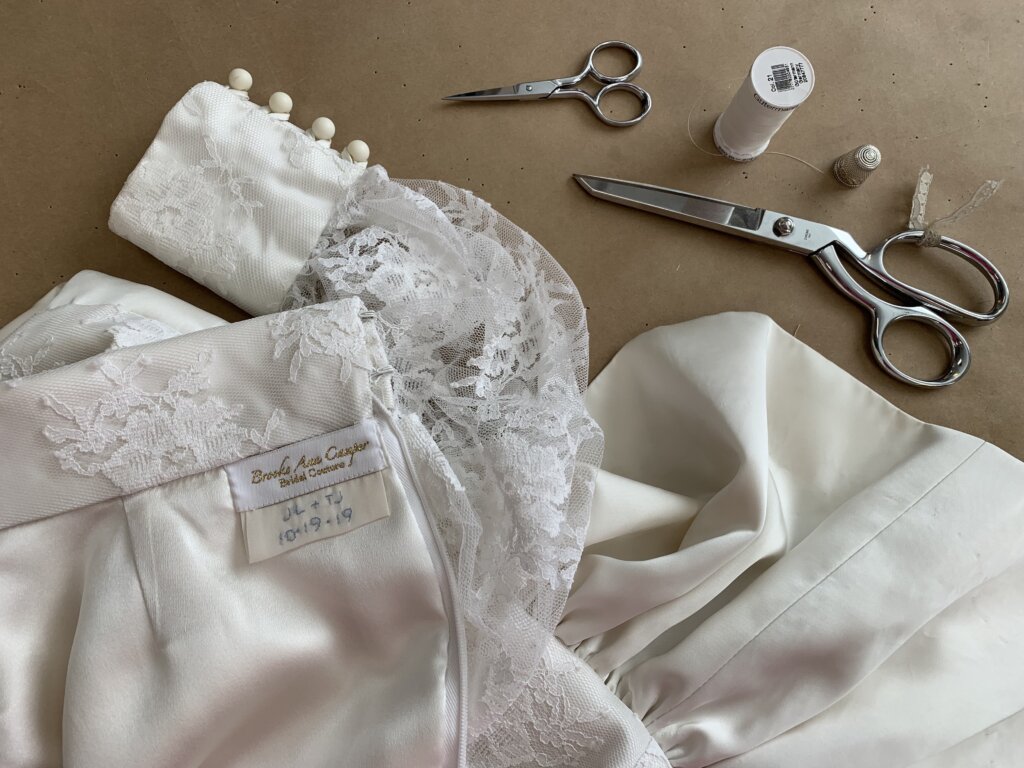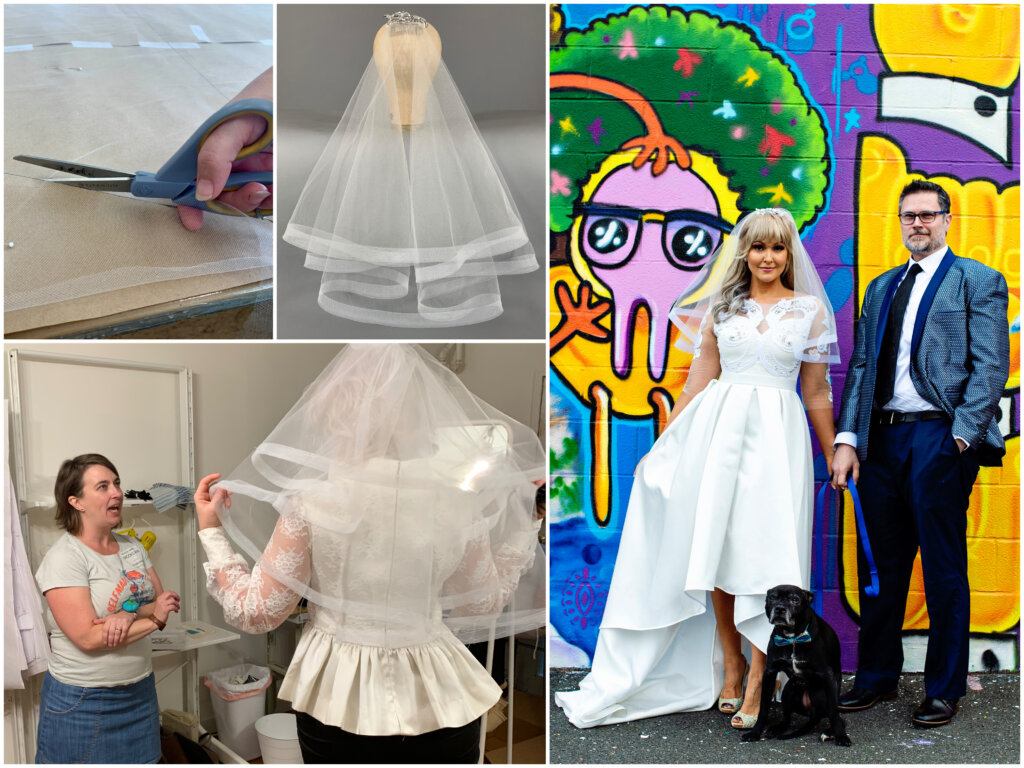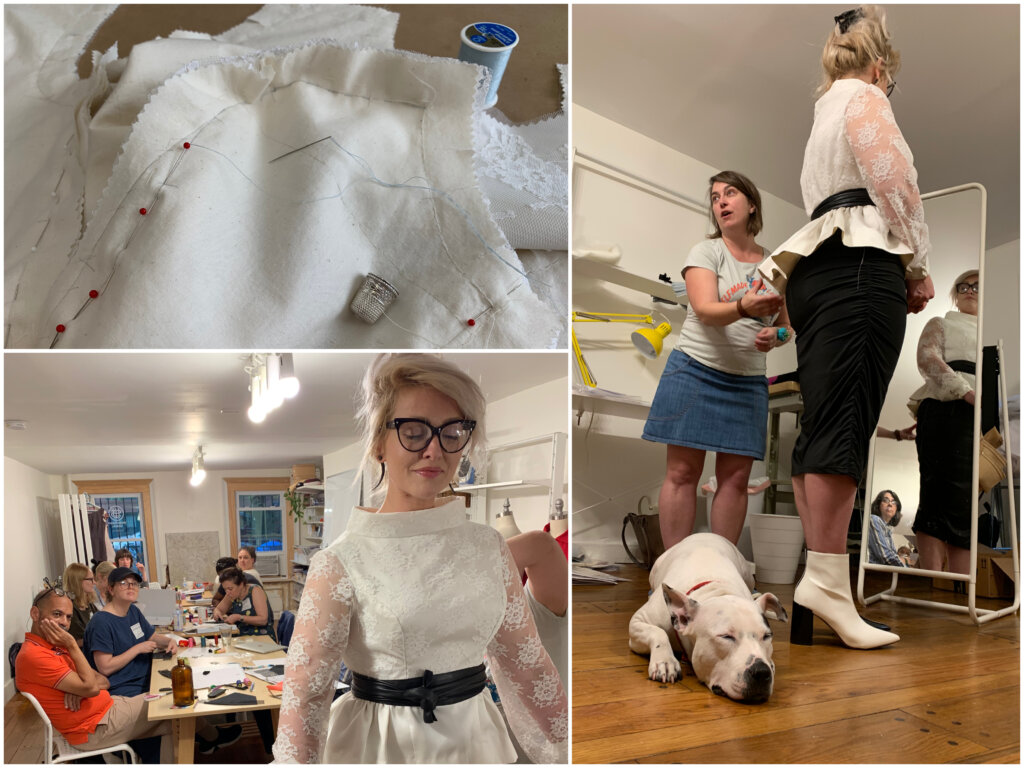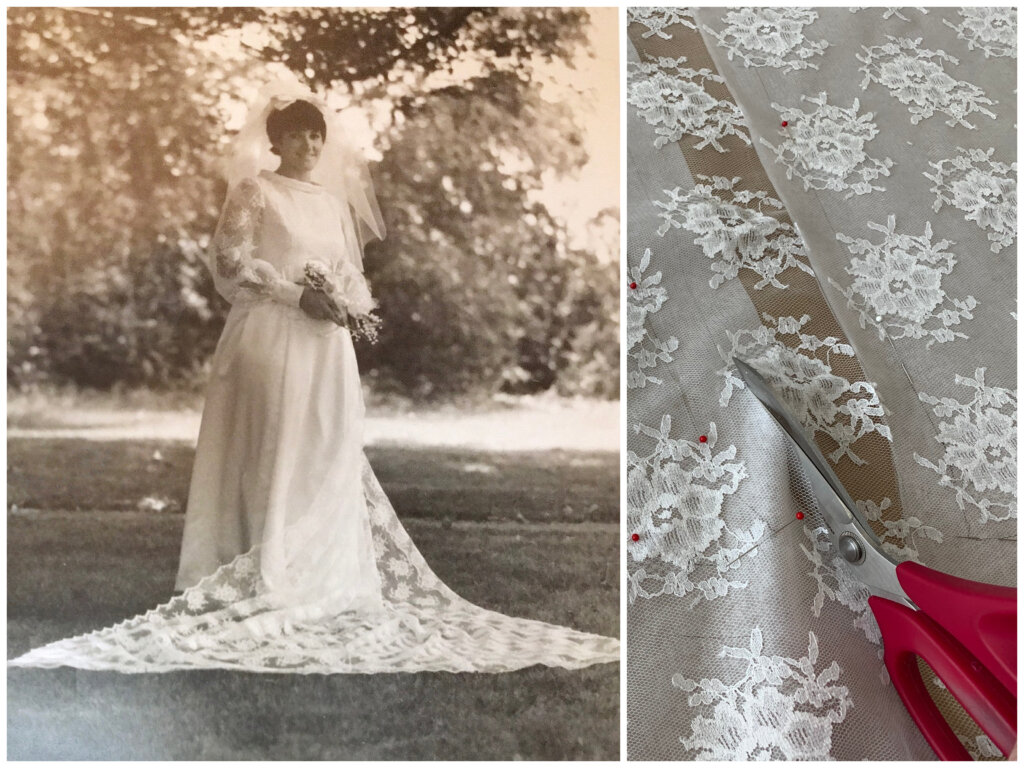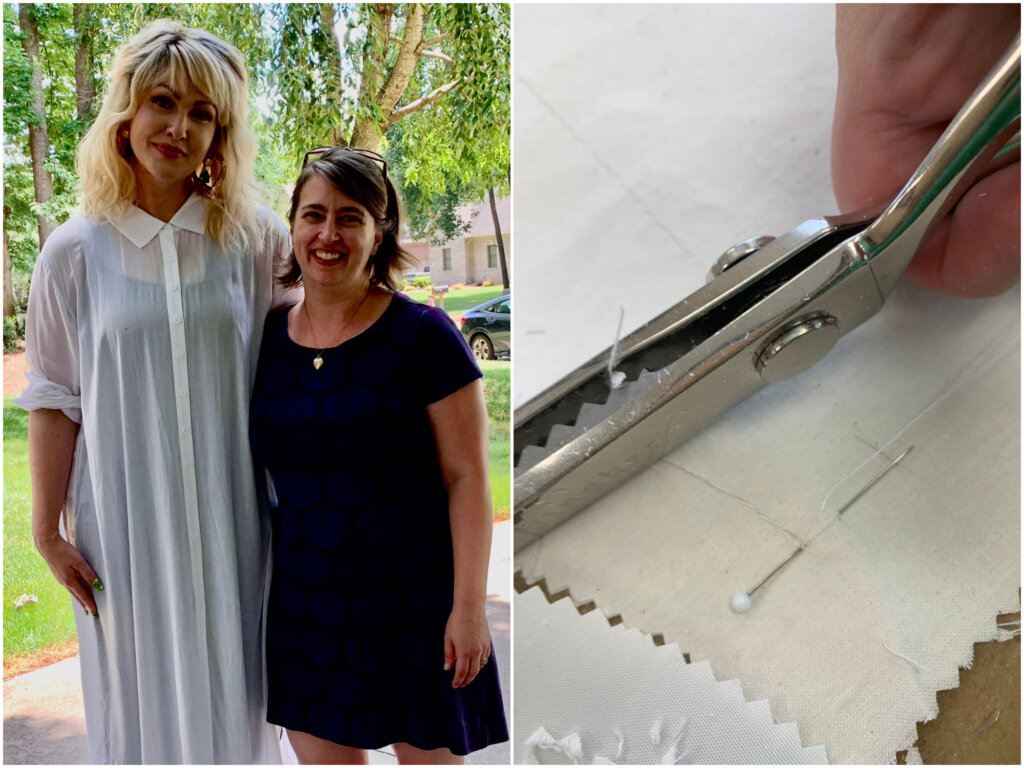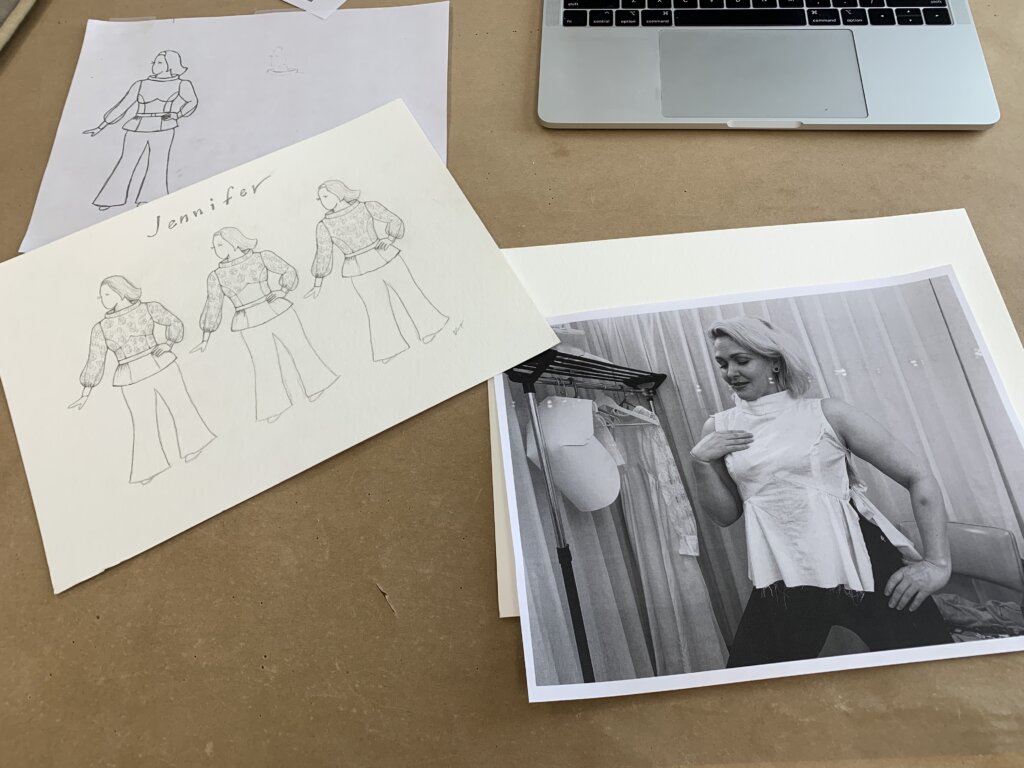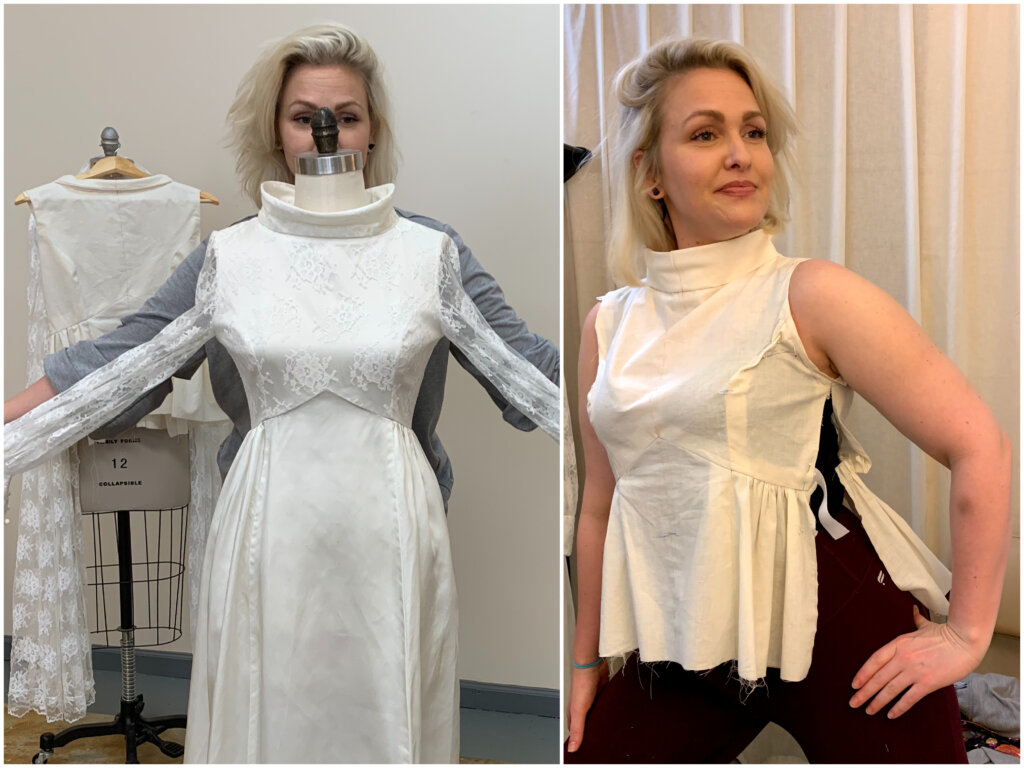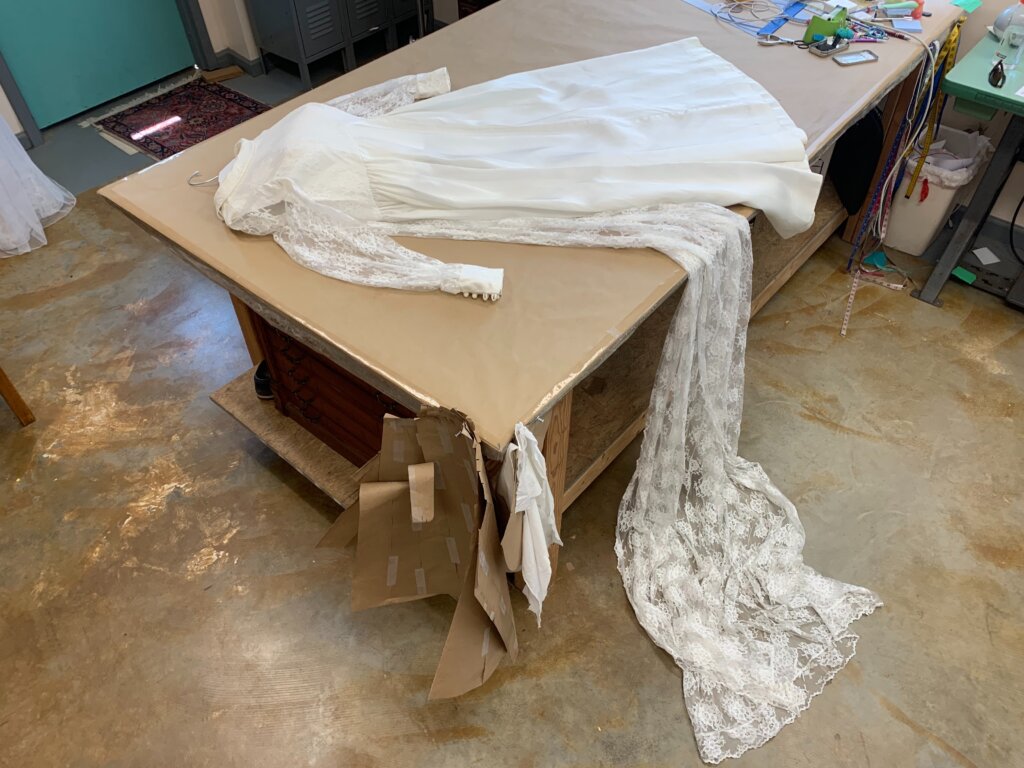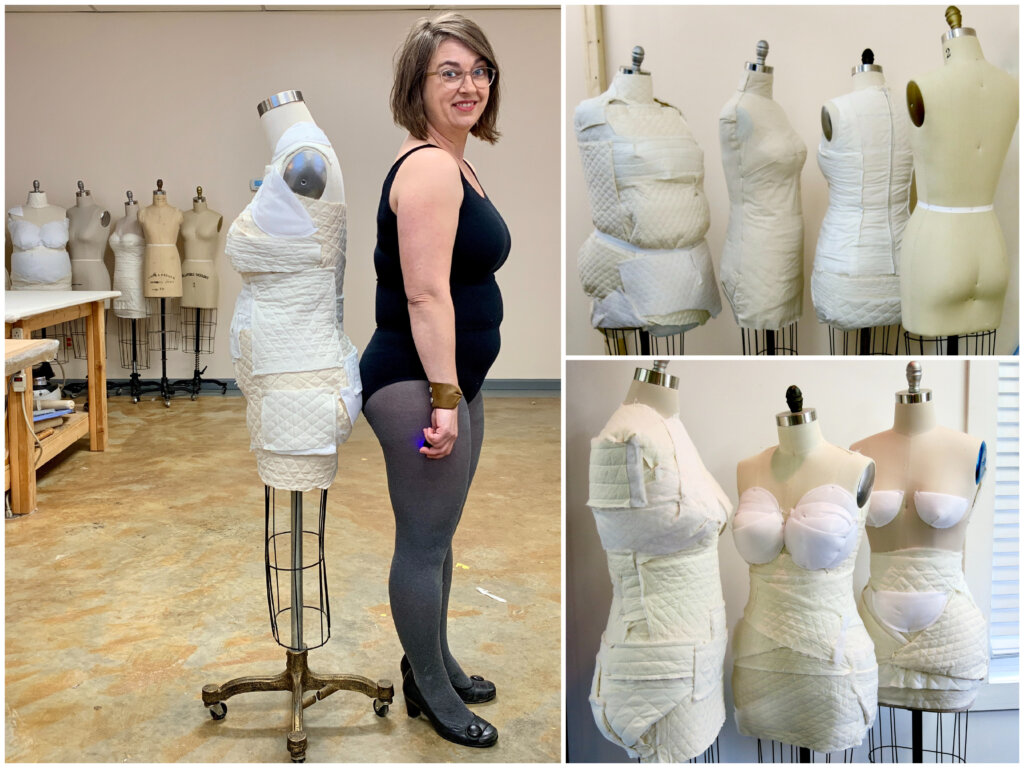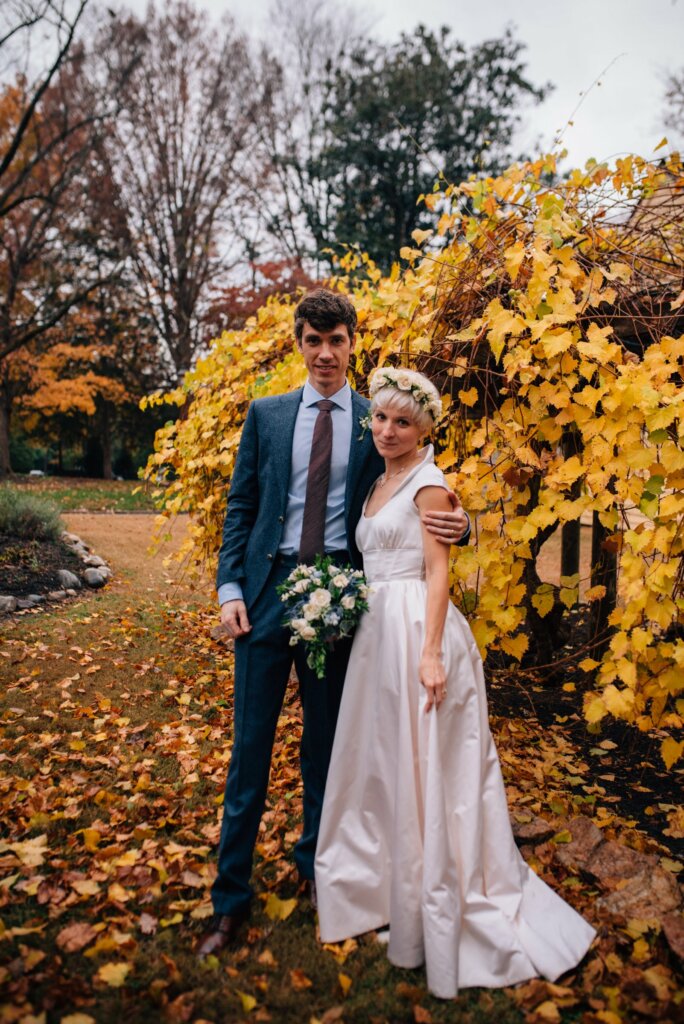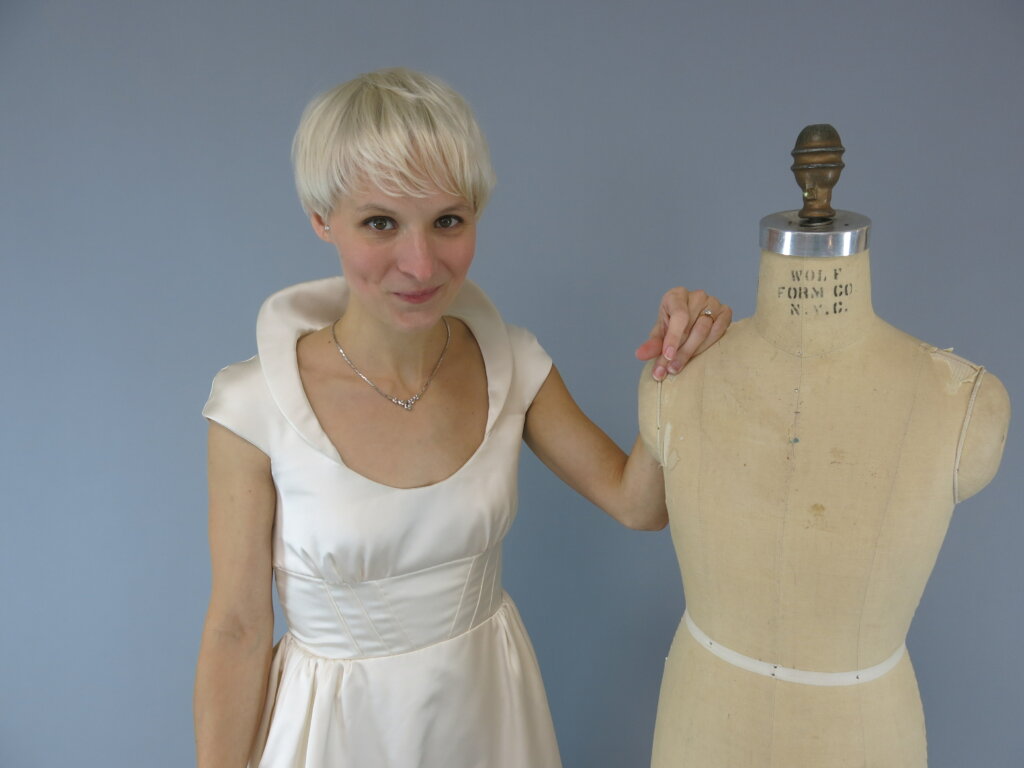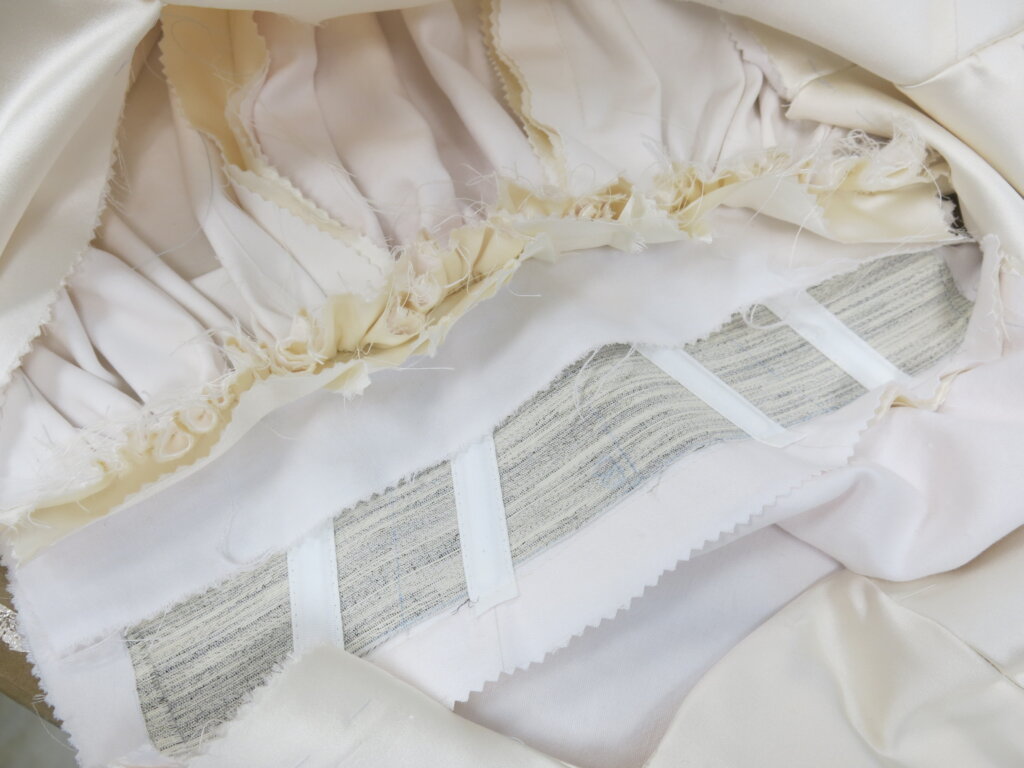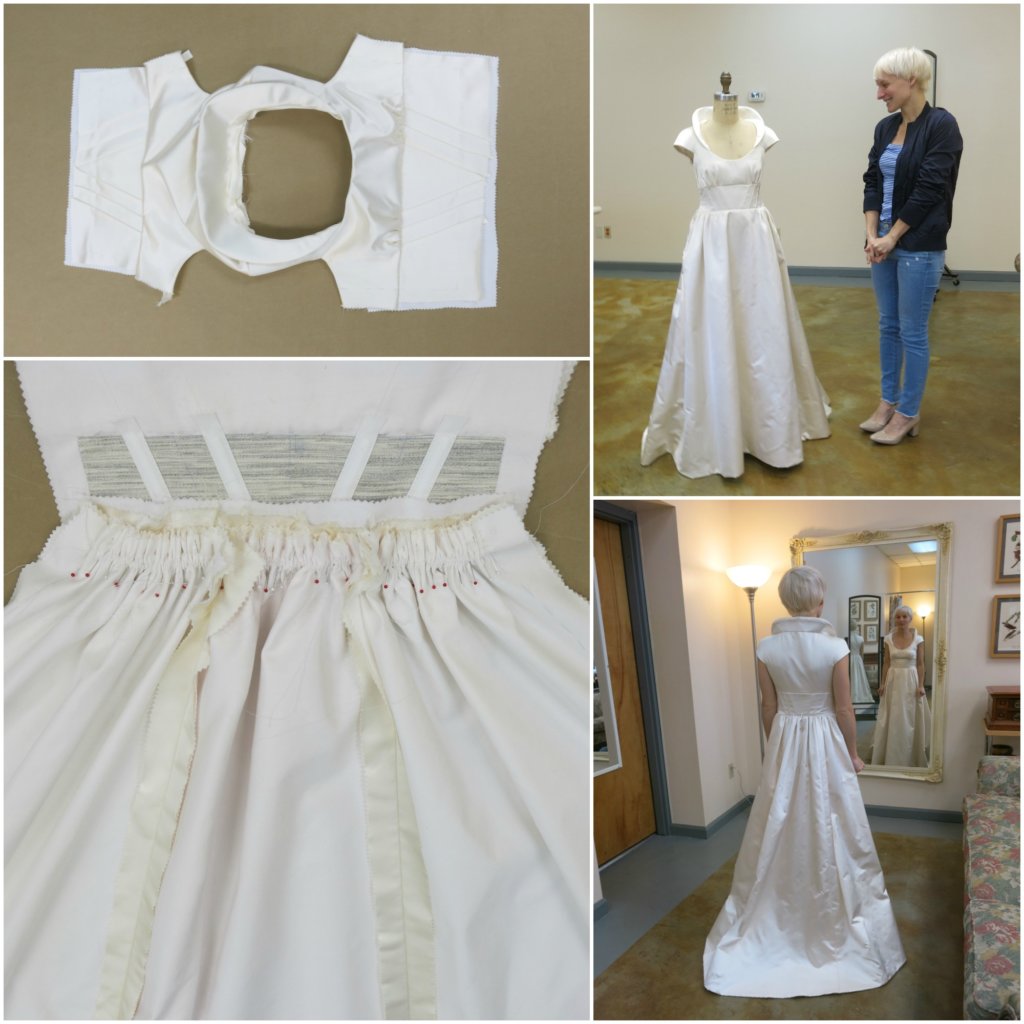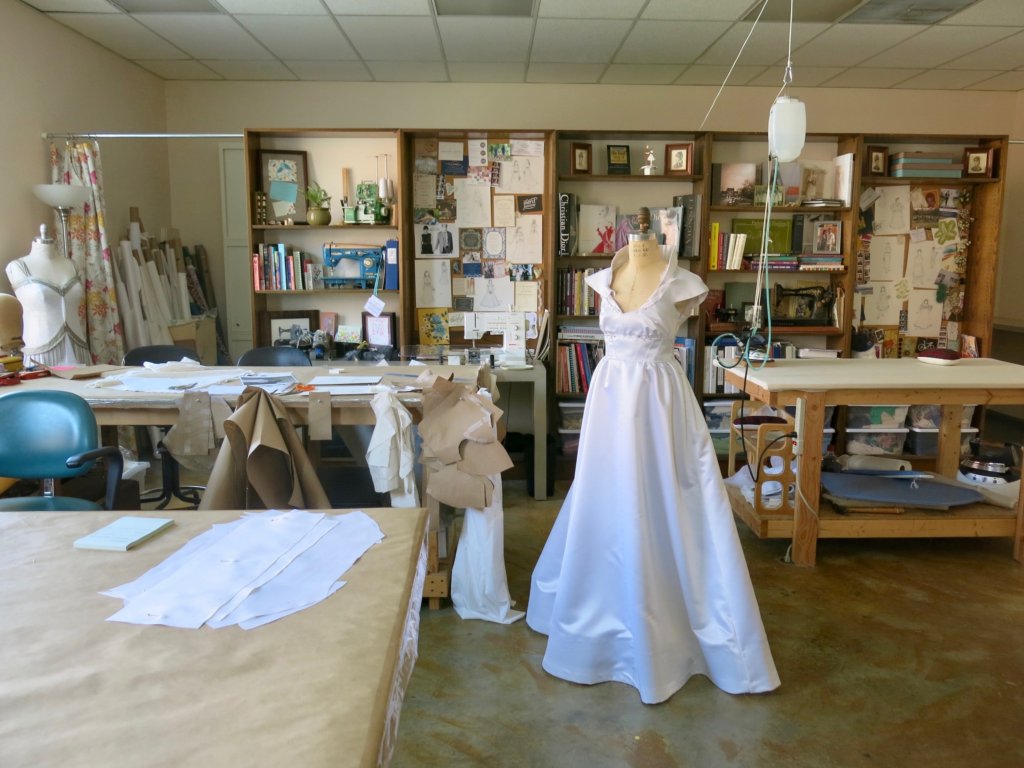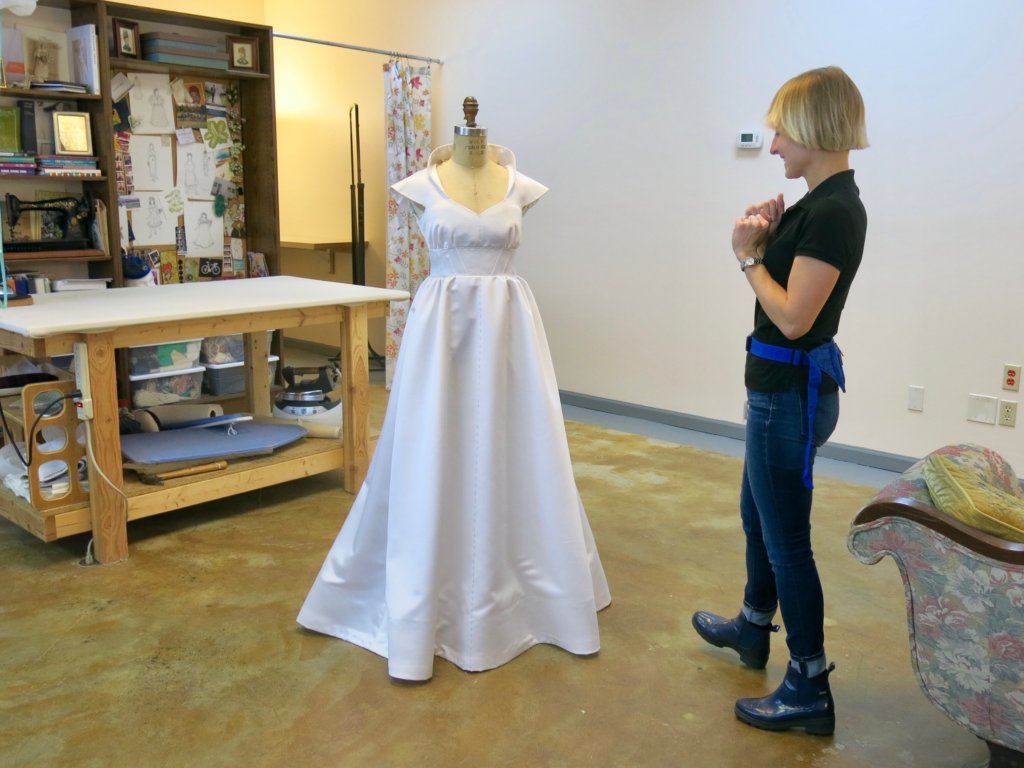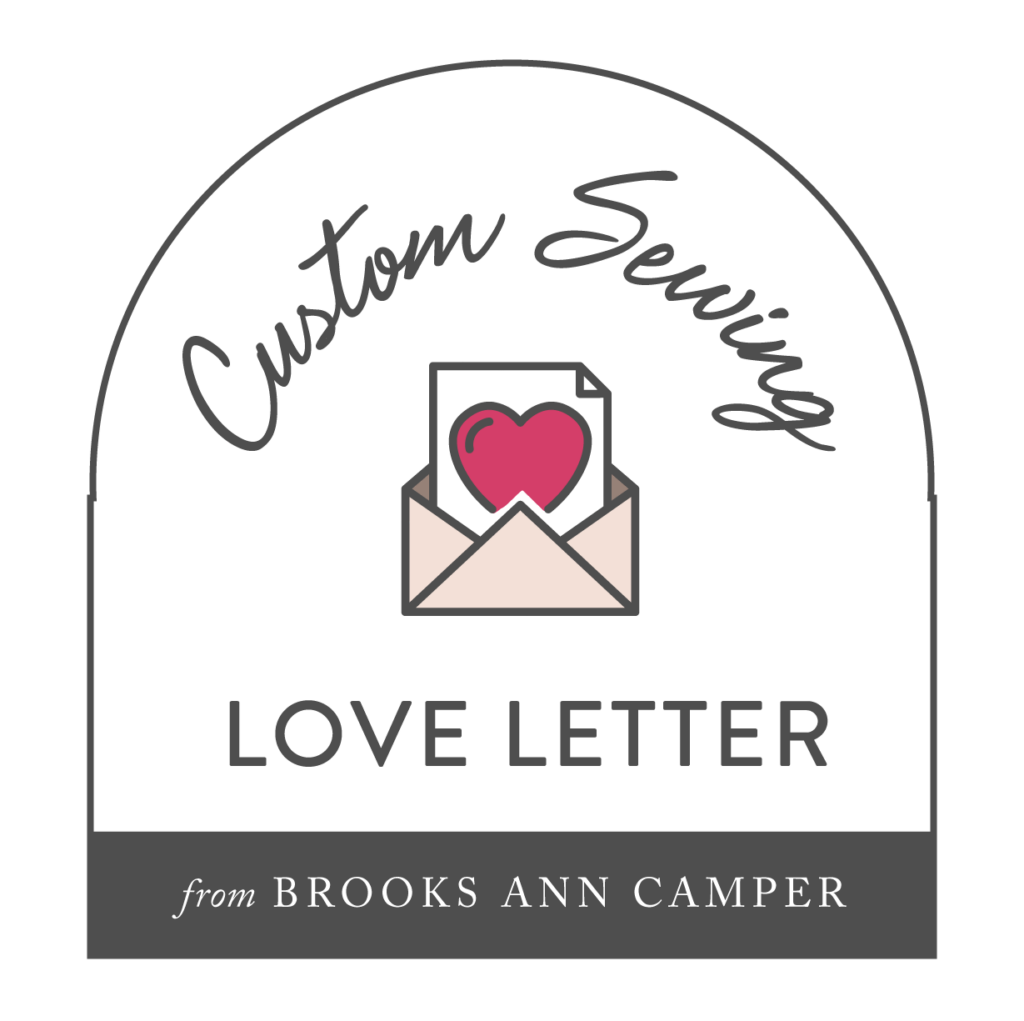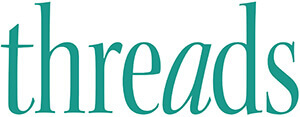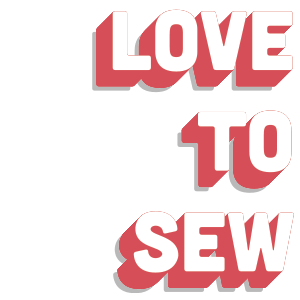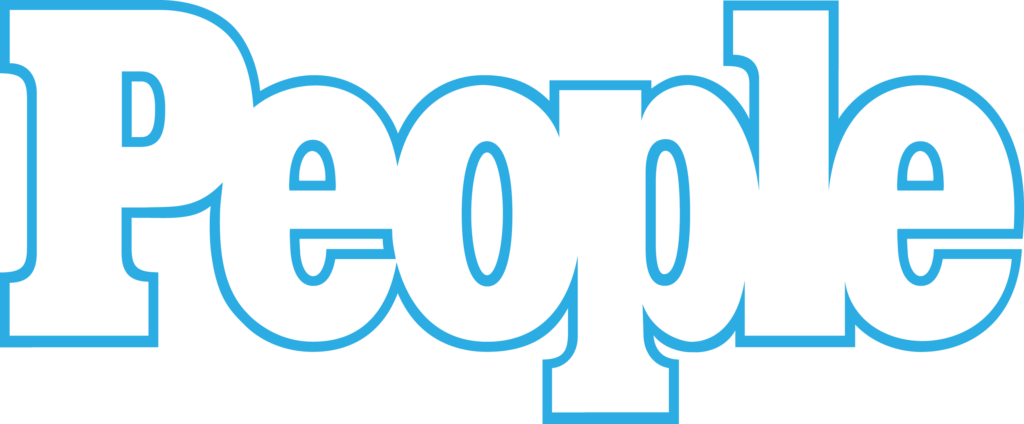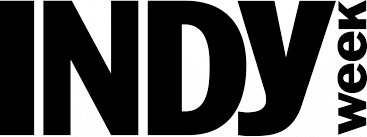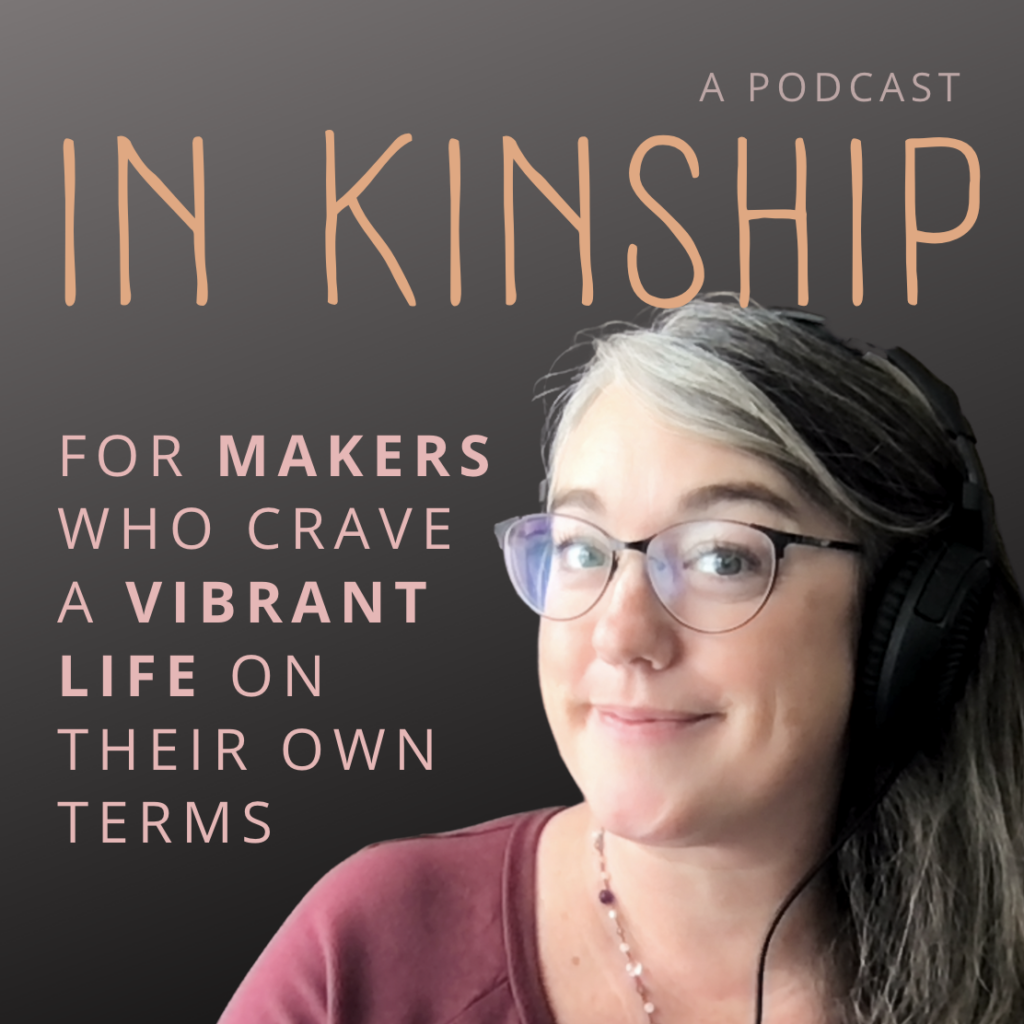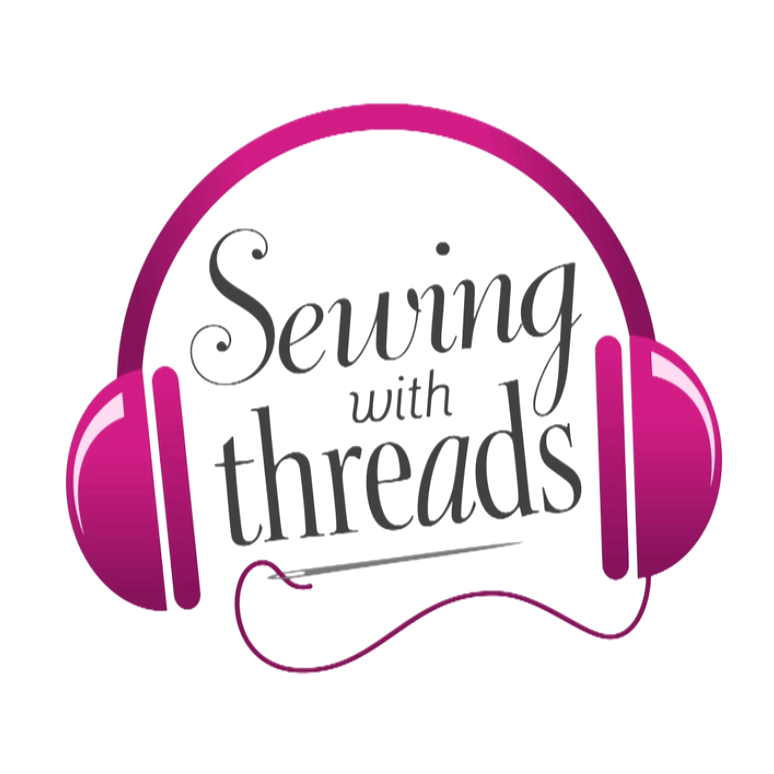The first thing I did once I got my dressform prepared, was to do a “rough drape”. I combine this with flat patterning techniques, but mostly I drape the dress on the form. To create a rough drape, I take muslin or some sort of cheap fabric, pin it to the “Michelle sized” dressform, cut it, re-pin it and draw all over it until it starts to look like the dress. I usually hang the sketch right next to the form for a constant reference when I have questions like: how deep is the neckline? or what is the angle of the hip decoration? For a symmetrical dress, the rough drape only has to be done on one half of the body, since when the pattern is cut, it will simply be doubled.
The rough drape is just that: rough. So once I’ve got it pretty close to what I am looking for, I mark all the seams, darts, and folds as well as add notches and reference points so that when I take it off the form, I can translate it onto paper and use it to create a pattern. Since my cutting table has a top that you can pin into, I lay out a large sheet of brown paper and push-pin my marked muslin pieces to it. I trace each piece with a spiky wheel making sure to transfer all my markings. The spiky wheel is a patternmaking tool that allows you to roll over fabric to the paper underneath leaving a “dotted line”.

I then remove the fabric pieces and take my new “dotted lines” and, using rulers and curves, I pencil them in onto the brown paper. Once all the pieces are in pencil, they have to be “trued up” which is where I measure and redraw the pieces until they fit together exactly. I cut out the “less rough” brown paper pattern pieces and redraw them back onto the fabric pieces. I pin this new and more accurate “rough drape” together and try it on the dressform to test it out and make adjustments. In Michelle’s case, my drape turned out pretty spot on and I only had to make minor adjustments before being able to finish my first attempt at her pattern.
I’ll use this same paper pattern that I just created throughout the dressmaking process, constantly adjusting it and revising it at each fitting until ultimately it is used to cut the fabric for Michelle’s wedding dress.



